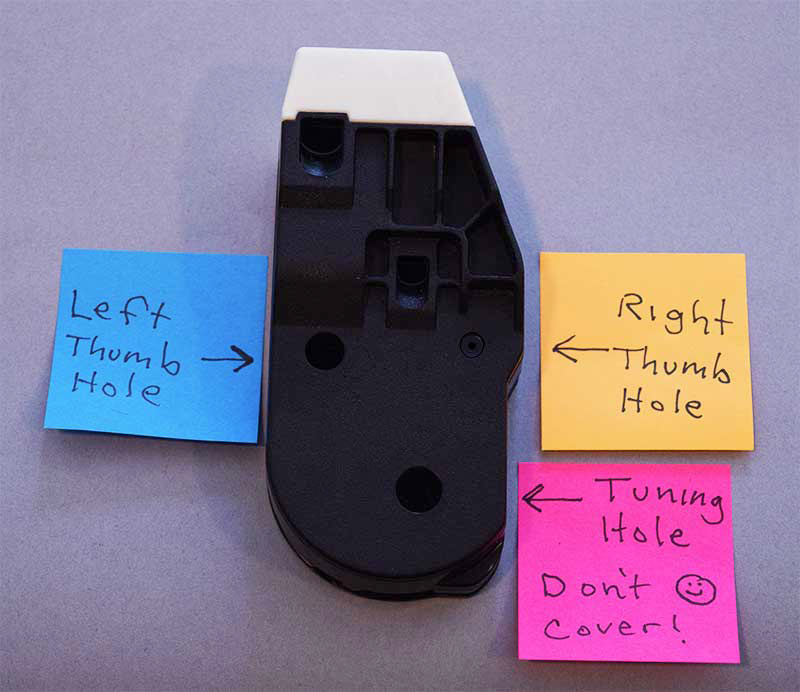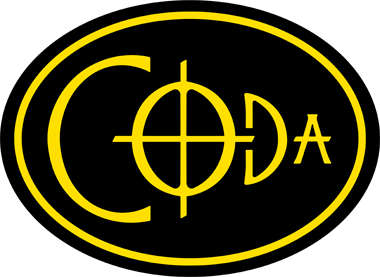There are a few issues that affect tuning.
Don’t Cover the Tuning Hole
Be sure to use your right thumb to cover the right thumbhole and not the tuning hole. (See the picture below.) If you cover that tuning hole on the bottom of Coda, the upper chamber will sound much lower in pitch than it should. By the way, don’t worry about covering that tuning hole by accident. It only happens when beginners –bless their hearts– mistakenly do it on purpose.🙂 Note: If you have a Clip on your Coda, it’s impossible to make this mistake.

Completely Covering Tone holes
If both sides of the divided tone holes are not completely covered with your finger pads, then the pitch will sound a little higher than it should. When you are new to Coda, you may have a little trouble consistently sealing the tone holes. Don’t worry. With a little practice, you’ll soon get the hang of this.
Note: The inner “half” of each divided tone hole controls the upper sound chamber. The outer “half” controls the lower sound chamber.
Blowing Pressure Affects Pitch
Be aware that blowing pressure affects tuning. Pitch rises when you blow harder and falls when you blow softer. If you blow too gently on the lowest notes (the way you are forced to play low notes on many recorders, tin whistles, and ocarinas), your lowest notes on each sound chamber will sound flat. For that reason, be sure to support the lowest notes on each chamber with sufficient blowing pressure.
For a more thorough discussion of tuning, go here.




